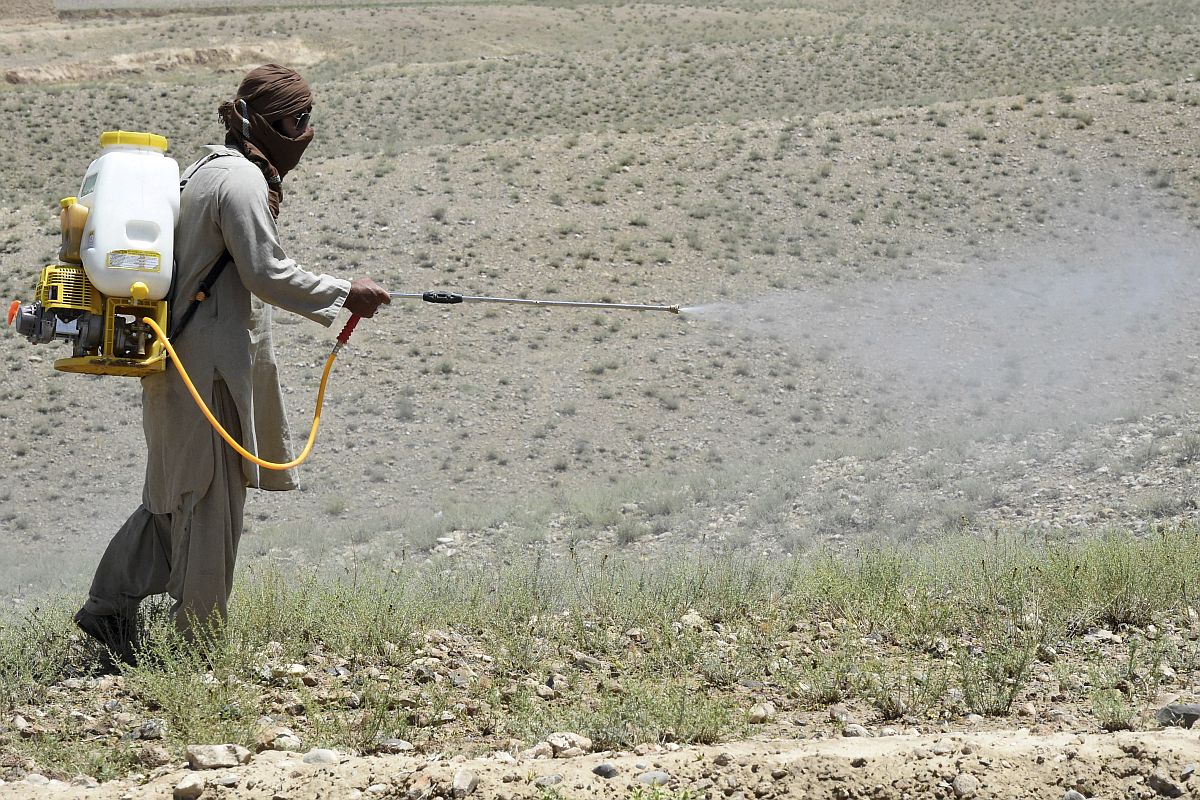Crisis Looms
India is once again staring at the prospect of a reduced wheat harvest as above-average temperatures threaten the winter-sown crop.
The conditional approval of Dhara Mustard Hybrid (DMH- 11) has created some uproar in the country. While the approval from the Government of India came last year, its extension into field trials was halted by the Supreme Court in August this year.

Representational Image
The conditional approval of Dhara Mustard Hybrid (DMH- 11) has created some uproar in the country. While the approval from the Government of India came last year, its extension into field trials was halted by the Supreme Court in August this year. The argument that cultivation of DMH-11 should be permitted during the ongoing sowing season was set aside by the Supreme Court. The Supreme Court observed that we must first examine the impacts of such crops on ecology and the environment.
Genetically modified (GM) crops are created by altering the DNA of existing crop plants. A gene fragment is either altered or inserted from another species into the genome of the food crop. The resulting genetically modified organism (GMO) includes in its genome a deleted, modified or new gene fragment which switches off or expresses a new character or ability not found in the original plant. While the terms GMO and transgenic are often used interchangeably, transgenic refers to an organism with a gene fragment from another species in its genome. A GMO is any organism with an altered genome either through addition or deletion in its own genome or introduction of a gene fragment from another species. Research into GM crops has been on for many years.
Advertisement
Flavr Savr (from flavour saver) tomato was the first GM food crop approved for commercial sowing and consumption in the US. This genetically modified tomato carried an artificial gene for slowing down the ripening process of the tomato. The addition of the artificial gene delayed the softening of the GM tomatoes and extended their shelf life. Once produced, the GM Flavr Savr tomato remained firm for a longer time and could be sold at distances further away from its site of production. However, despite these benefits, the production of Flavr Savr tomato was stopped in 1997, only three years after its approval.
Advertisement
Preliminary investigation into the failure of the Flavr Savr tomato reveals two interesting insights. Calgene, the company behind the product, was more into genetic manipulation and less into transport and sale of tomatoes. Secondly, increasing awareness about GMOs resulted in more discussions around public health and safety and on the ecological implications of this technology. Many of these con- cerns, relevant even today, have gone unanswered.
According to the GM crops safety, benefits, risks and global status report of the Food and Agricultural Organization (FAO), almost all GMOs pose potential risks of different kinds. Herbicide tolerant GM crops like DMH- 11 are designed to withstand a particular chemical herbicide. The herbicide kills the weeds but not the crop plant. This poses many agro-ecological risks such as weeds becoming resistant to herbicide or crops becoming weedy and invasive. In some cases, cross-pollination between a GM crop and a
wild variety may result in the wild variety acquiring herbicide tolerant traits with undetermined long-term consequences.
Genetically modifying crop plants for making them resistant to pests can build up resistance in target insect populations. Subsequent insect populations may no longer be affected by this genetic modification. Meanwhile other adverse ecological impacts, such as the threat of cross-pollination between GM crops and related plant species, continue to pose risks. There is also a need for conducting continuous and long-term studies on toxicity, allergic response and nutrition composition of GM crops before, during and after their environmental release.
Simultaneously, public perception of GMOs needs constant study to avoid unnecessary introduction of GM crops in the market. The manufacture and use of any potentially risky technology or product must be driven by need or demand and not by what can be achieved in the laboratory. In the case of Flavr Savr, the final nail in the coffin was the public perception about its detrimental health impacts despite any significant scientific evidence.
In recent times, the socioeco- nomic impacts of GMOs have come to the forefront. A key social concern with GMOs is that they can shift the control of food supply from the farmer to the corporations. Companies manufacturing GMOs can introduce a ter- minator gene in the seeds using the argument that this will prevent cross- pollination with wild relatives. Plants with terminator gene are unable to reproduce which prevents farmers from saving harvested seeds for the next season.
Private sector monopoly over GM seeds, decline in traditional seed varieties and loss of seed preservation methods are all areas where research is wanting. Addressing these issues necessitates interdisciplinary collaborations across fields such as agronomy, agro-ecology, bioethics, sociology, economics, law and public policy. Scientific investigation in this direc- tion must continue, but the environmental and commercial release of GM crops must undergo the strictest of scrutiny.
(The writers are, respectively, an associate professor and a student at the Jindal School of Environment & Sustainability, O.P. Jindal Global University, Haryana, India.)
Advertisement